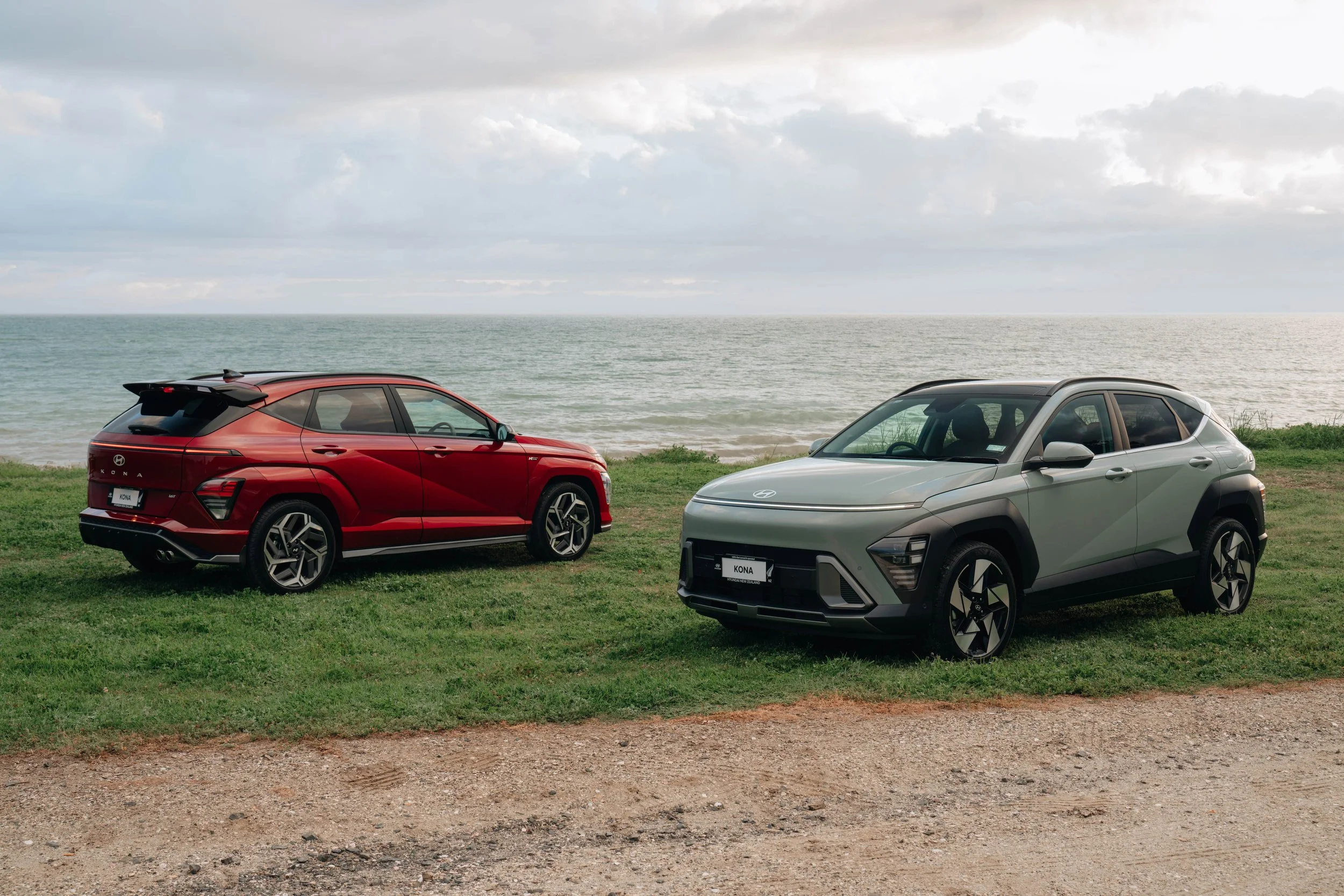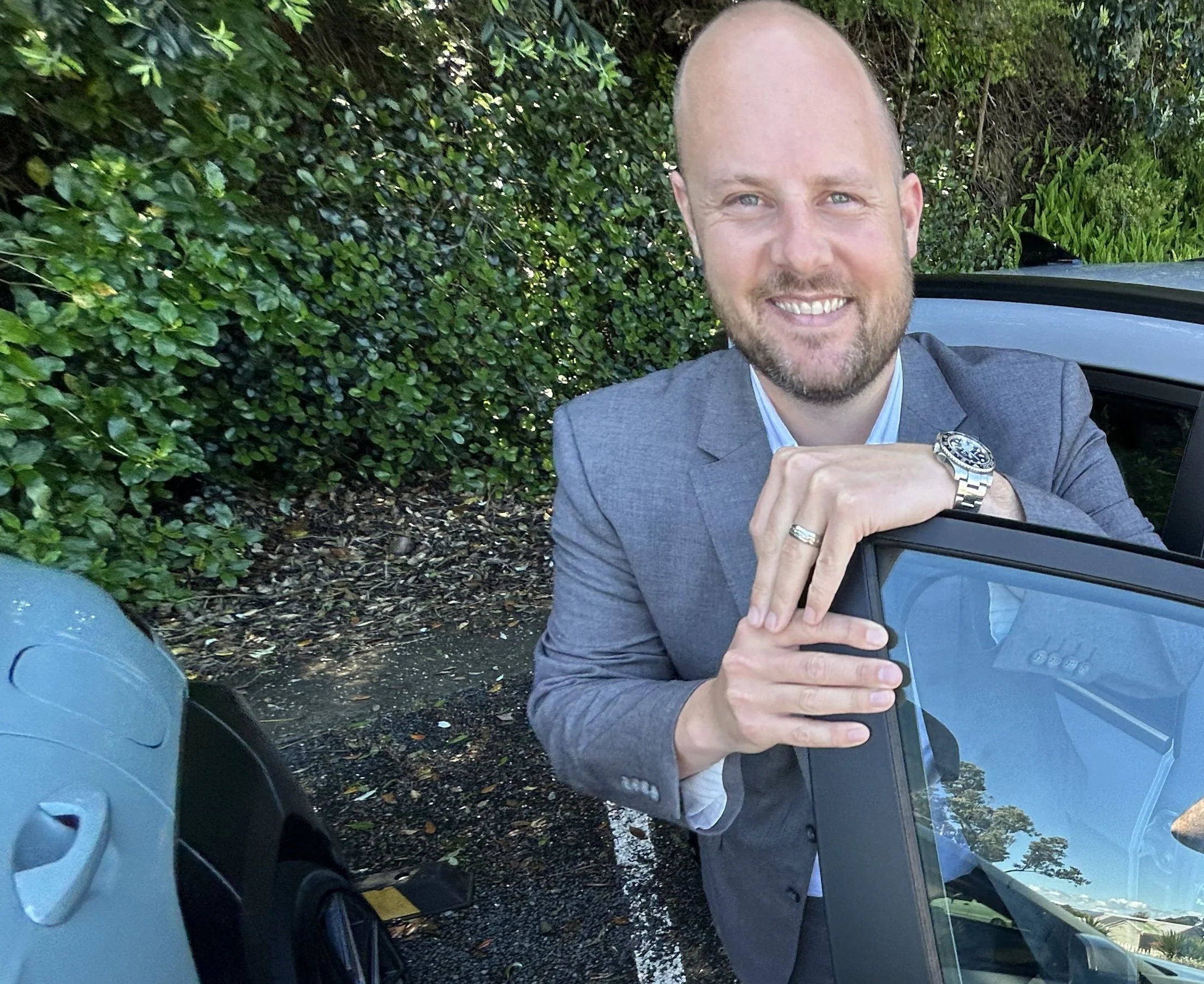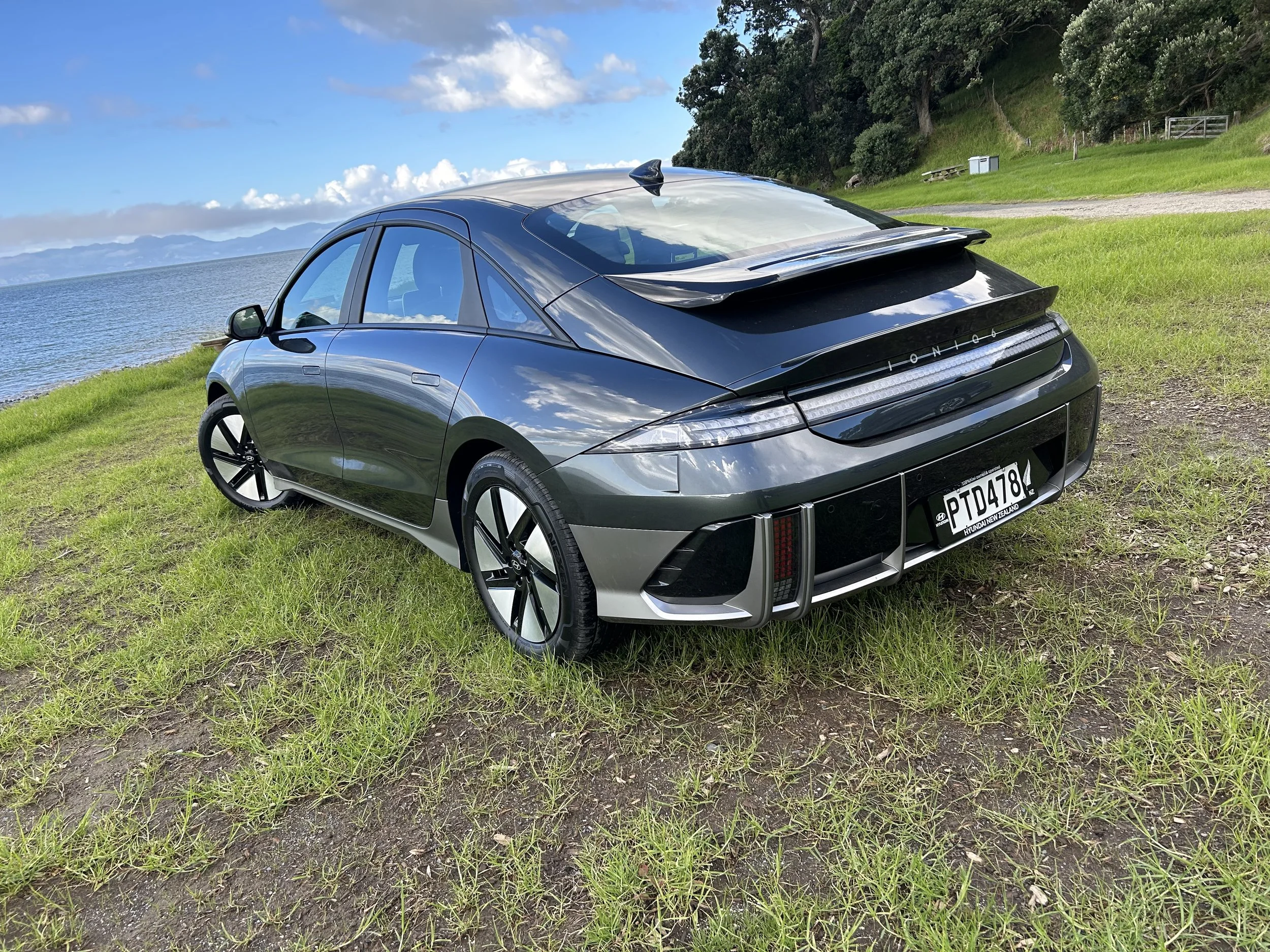Post Clean Car EV forecast demands crystal ball
/Hyundai NZ will stick with battery products, but also feels compelled to review its national strategy.
EXPECTATION new electric vehicle sales will likely become unpredictable for perhaps all of 2024 has been expressed by a high-profile sector performer.
Perception that imminent withdrawal of political support for electric car buy up has already hurt consumer interest and is set to create an erratic period, in which products potentially resettle into altered pricing, has been expressed by many industry involvers.
Hyundai New Zealand, for its own part, says it remains confident in the electric vehicle future but nonetheless intends to review everything it does, likely around March.
Thought about this from the Auckland-based operator’s national sales manager.
Charlie Cowperthwaite says everything comes down to what the incoming National Party-led coalition government does to Clean Car and how that affects buying patterns.
“We will see what happens with legislation. Unfortunately we don’t have a crystal ball, but I definitely think there will be some realignment.
“We need to review at the end of the first quarter.
“EVs are always going to be an important part of the mix, and they are an important step toward decarbonising NZ’s transport sector.
“They are definitely going to be a really important part of the future.
“It’ll be interesting to see what that 12 month window from January 1 to the end of December next year looks like, as the market settles and adjusts to the changes.”
His comment shared at this week’s roll out of a second generation of the Kona compact sports utility (above) that has been important to its EV push.
Electric versions are set to avail from February, to join just-launched pump-reliant editions - 1.6-litre hybrid, 2.0-litre and 1.6 turbo four-cylinder pure petrols - driven by media over the past two days.
The current Kona EV was immediately popular from release in 2018, with 2700 registered from then. It has this year been the second-strongest selling of Hyundai’s four passenger electrics, benefitting from the core compact sports utility sector having seen high electrified transition.
The new type could conceivably build on that appeal as has the same new body and features of the petrols and also delivers a new 65.4kWh drivetrain that, while still a 400v architecture rather than the 800v used by other latest Hyundai EVs, improves range to a WLTP-assessed 490km, recharges faster and has vehicle to load capability.
Where it will price is not clear: The outgoing types had full RRPs of $77,990 and $89,990 and all the new petrols have become dearer, by up to $10,000.
Will bringing the car into a post Clean Car rebate environment also have influence on the pricing position?
That’s being steered clear of, but the high count of $79,990 EVs is no coincidence - distributors have acknowledged pricing products at a loss to achieve rebate-induced volume has been a policy.
Original Ioniq, entry Kona and Ioniq 5 have all had rebate eligibility.
Cowperthwaite (above) says the $7015 rebate for sub-$80,000 electrics was clearly influential. Ending this and curtailing penalties on high CO2 vehicles could well change buy-in patterns, he adds.
“We saw that massive shift toward eco powertrains (over the past few years)… obviously we’ve had extra incentive of the (Clean Car) rebate over that time.
“Assuming the Government carries through with proposed legislative changes and we lose any rebates or fees, it’ll be interesting to see what happens with that demand.
“Until we have a settled set of Government legislation to operate with, we won’t be able to see what the consumer demand is. We are fortunate that we also have really good internal combustion and hybrid options.”
Hyundai NZ executives have observed that if abolition of ‘ute tax’ is carried out, NZ will be the first country to have enacted then repealed a low emissions support process.
This has already been a challenging year for HNZ’s battery car strategy.
Its four electric passenger models have cumulatively achieved one third the registrations tally for the country’s best-selling electric, Model Y, which had 3035 registrations by end of last month, according to Waka Kotahi data.
Hyundai’s combined count is also half that for the country’s second-most popular electric car, the BYD Atto 3, and 172 units behind the MG ZS EV, in third.
Quixotically, too, Hyundai’s current top dog in the battery-wed space has been an old one - that original Ioniq (above), which dates from 2017 and kicked off HNZ’s volume EV push.
The five-door hatchback ceased production in July, 2022, but HNZ built up a big stockpile for sale as a fleet hack and that has paid off, with 441 registrations at end of October.
“We saw an opportunity with that car in the fleet space and we ordered … a substantial number of cars, as it was coming to the end of its production cycle.”
That run will soon end, as stock is expected to exhaust in January, but the car has done well enough to be No.8 in the 2023 new electric car registrations top 10, one spot up on Kona electric, on 406.
In jarring contrast, the cars that deliver Hyundai’s best electric technology, the 800v Ioniq 5 and Ioniq 6, have not done very well.
Ioniq 5 (above), which carried the New Zealand Car of the Year title into 2022, its first full year of sale, has achieved 351 registrations; a jarring contrast to the 719 it took last year.
The change of fortune has been blamed on difficulty sourcing stock; an issue clearly not impacting the car’s Kia doppelgänger, the EV6, as that type has been the fifth most popular EV year to date, with 740 registrations.
Cowperthwaite says Ioniq 5 has been subject to “pretty significant supply constraints applied from launch until the middle of this year - we had a gap there, we felt that and it’s reflected in the sales.”
The Ioniq 6 sedan sister ship (below) released in May has barely taken off, with just 91 registrations.
It was always going to be niche, Cowperthwaite says, reminding SUVs command almost 80 percent of the passenger market.
“It is a tough space. We would have loved to have sold a few more.” No review of the model and how it positions is contemplated. “It’s a very important model for Hyundai globally.”
He argues the changing fortune of Tesla Model 3 - which he doesn’t count as a direct competitor, as it categorises as a medium model whereas Ioniq 6 is large - reinforces the point. It started hot, but lost considerable ground as soon as Model Y came along. “Model 3 is now down 65 percent.” Nonetheless, the Tesla four-door is still the fifth most popular new EV with Kiwis, with 754 registered.
Many in the industry are suggesting the business has fallen into stagnation since last month’s general election.
Realisation of a last chance rush to secure rebate cars appears muted and many brands are incentivising to hurry up demand. There is also growing evidence that some brands are holding considerable stock.
Cowperthwaite is coy to address that, but says his feeling is that, by the end of the first quarter of next year, “there will be a fair bit of residual (EV stock) whether there is a number plate on it, or not, around the manufacturers and I think that will take a little while to work through.”
Whether some brands have over-stocked is not so easily to discern, “I don’t really have a clear picture of what others are holding in stock. The industry as a whole has been plagued with difficulties and lumpy supply of EVs, so it’s definitely possible.”
There’s also emergent thought from some quarters the market is moving from when it was fed by eager early adopters.
Moreover, EV converts now seeking to trade to newer EVs are finding their initial acquisitions have been hit hard by depreciation. Thought famously expressed in 2019 by Elon Musk that “if you buy a Tesla today, I believe you are buying an appreciating asset, not a depreciating asset” has proven extremely inaccurate.
Hyundai NZ is watching all trends with confidence its product holds decent residual value.
Meantime, it has signalled intent to launch more EVs in 2024.
Next along after Kona is is attention-magnet Ioniq 5 N, a 478kW/740Nm all-wheel-drive street racer here around March.
This first electric effort from the company's high-performance brand, akin to AMG for the Mercedes and the M lineup for the BMW, is engineered to feel like an old-school, petrol-powered performance car.
Cowperthwaite says a pre-sales ‘nurture’ programme for N enthusiasts - including those several hundred owners of the petrol-reliant i20N, i30N and Kona N - is already under way and, while final pricing has yet to be set, dealers have taken orders.
Late-2024 arrival is tipped for the Ioniq 7 seven-seater, whose Kia EV9 equivalent is now here. Hyundai has displayed a concept but has not yet revealed a production version.
Also tipped is another electric that Hyundai NZ won’t discuss, but claims will be an exciting addition. A small car, a utility? Rumours abound about a model in a new vehicle segment that it doesn't currently compete in.
South Korea’s dominant car maker is targeting global EV sales of nearly 1.9 million units annually by 2030.





















